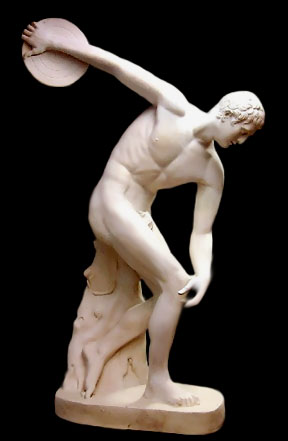Greek art was the basis for most Western art and
went through several artistic periods. The earliest works of Ancient Greek art
were influenced by that of Ancient Egypt. You can see this in paintings where
figures are shown in their profile rather than looking straight ahead. Greek
art styles spread as they conquered more lands. It influenced other artistic styles from the Romans to the
Japanese and everyone in between, thanks to Alexander the Great and his crew.
Next came Byzantine art, a period starting from
about the 5th century and lasting until the collapse of
Constantinople in 1453. This period of art still held on to a lot of classical
themes, but it focused on glorifying and paying homage to God and other holy
figures. Following this was a school of icon painting called the Cretan School,
named after its popularity on the island of Crete.
Most Greek artists didn’t have much opportunity to
study art while they were under Ottoman occupation, so many of them chose to
study abroad. At this time during the 19th century, Munich was one
of the centers for artistic study, and many Greek students went there to study.
Upon coming back to Greece, they started the Greek Munich School to pass on the
things they learned to the next generation of artists. Among some of the top
names to come out of this generation are Theodoros Vryzakis, Nikiphoros Lytras,
Georgios Jakobides, Georgios Roilos, and Konstantinos Volanakis.
 |
| "Grandma's Favorite" by Georgios Jakobides |
Greek artists continued to draw influences from
other art capitals of Europe throughout the 20th century, such as
Paris and Rome. French
Impressionism was especially popular among Greek artists. Other acclaimed artists who made their
mark during the 20th century include Constantine Andreou (painter,
sculptor), Thodoros Papadimitriou (sculptor), Giorgio de Chirico (painter,
founded Metaphysical art), Jannis Kounellis (influential in Arte Povera movement),
Theodoros Stamos (abstract expressionist painter), and Constantin Xenakis
(kinetic sculpture).
 |
| Constantin Xenakis |
Greek literature is written in Greek, and its
beginnings are generally attributed to Homer’s timeless classics, the Iliad and the Odyssey. Poetry was
also highly regarded, and poets such as Sappho and Pindar are two of the most
well known. Historians, such as
Herodotus and Thucycides, were instrumental in creating chronicles highlighting
important events in Greek history. Most notably, philosophers such as Socrates,
Plato, and Aristotle had such an influence on prevailing thought at the time
that they are still highly revered and studied today. Scientific studies and treatises were also being written, Hippocrates
being the most well known. He’s
also the namesake of the term “Hippocratic Oath,” which basically holds
doctors and medical staff to swear an oath that they will uphold specific ethics in their work.
Athens became the center for thought, education, the
arts, and of course, literature.
Greek literature is essentially divided into the three main eras:
Ancient Greek literature (before 350AD), Byzantine literature (about 290-1453),
and Modern Greek literature (1453-today). It’s a little weird to think of the
“modern” era starting over 550 years ago!
Ancient Greek literature was pretty diverse as far
as types of literature. Of course, poetry was always popular, as was
drama. Both tragedies and comedies
were becoming quite the thing, and many new plays were being written and
performed. Translations of the Bible into Greek were also being written for the
first time during this period. The
Byzantine era was more or less a transitional period, although encyclopedias
were brought to the forefront during this period.
 |
| An early transcription of the New Testament called "Papyrus 46." |
Most of the literature written during the Modern
Greek period was written using the Modern Greek language. Poetry and dramas are
still being written during this time. Literature became influenced by Italian
trends in literature and philosophy as well as other European trends. As Greece
moved toward independence, literature took a more nationalistic turn. Kostis Palamis was considered the
“national” poet. Many writers, novelists, poets, and playwrights have emerged throughout
the 19th and 20th centuries. Many have won awards and
prizes for their works, including Giorgos Seferis and Odysseas Elytis who are
the only two Greeks to be awarded the Nobel Prize for Literature (Seferis in
1963 and Elysis in 1979).
 |
| Giorgos Seferis |
Of course, there have been many books written about
Greece, or take place in Greece, or are based on earlier Greek plays and epic
poems and mythology. “Jason and the Argonauts” is one Greek myth that has been
remade as movies and TV series several times. Greek mythology is the basis of
many stories and references in other works. Some of the most familiar gods (and
many are copied in Roman mythology) who are the subjects of fables and mentioned
in lyrics are known around the world: Aphrodite, Apollo, Ares, Artemis, Athena,
Demeter, Dionysus, Hades, Hera, Hermes, Hestia, Poseidon, Zeus. There are many
classifications of minor gods and demigods, and important mortals; it’s a huge
list. One of my favorite books –and I’m not necessarily a romance genre lover–
is Captain Corelli’s Mandolin by
Louis de Bernières, which takes place on the Greek island of Cephallonia during
the German and Italian occupation during WWII.
Up next: music and dance



No comments:
Post a Comment